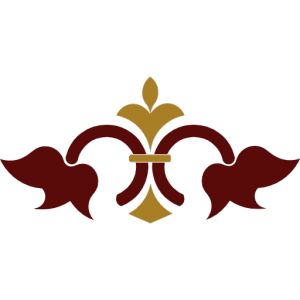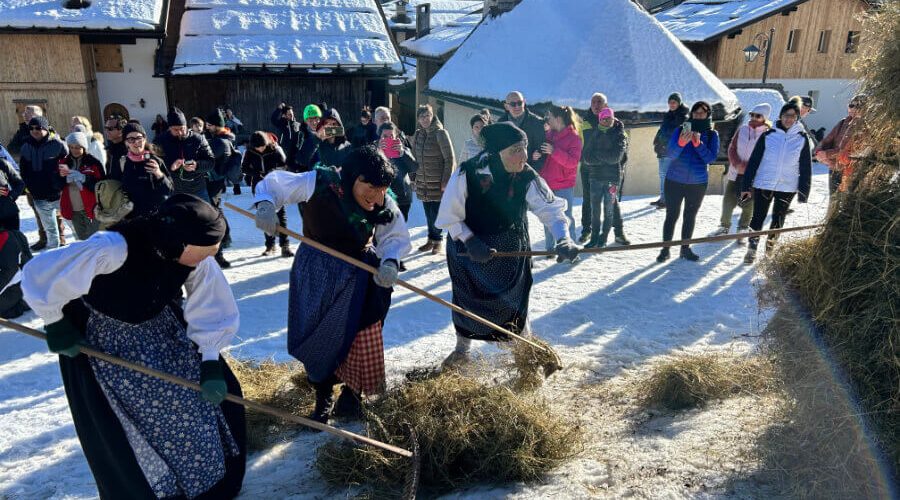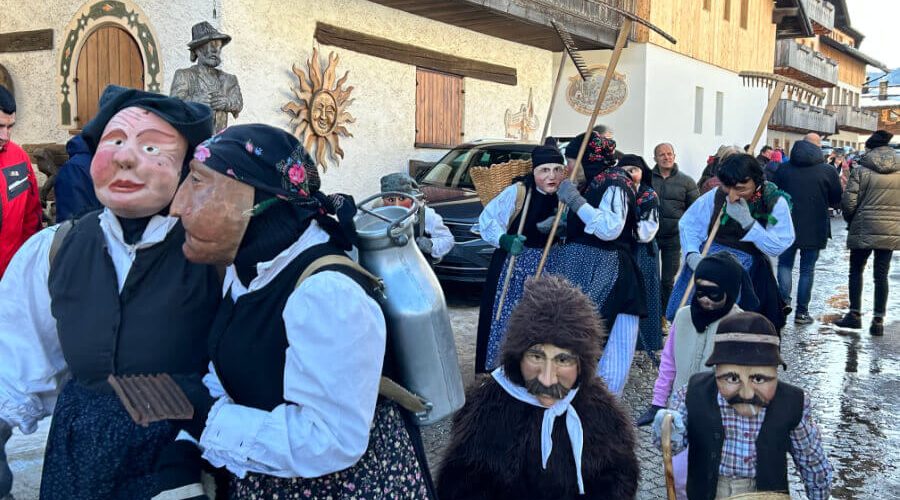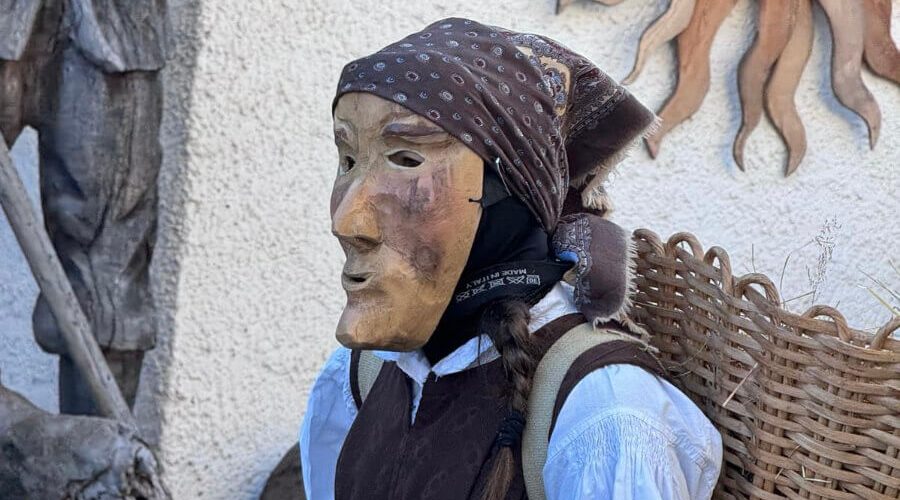The Sappada Carnival represents an intense moment of tradition, folklore, celebration and fun. The long "Carnival Time" is marked in local custom by some key days: the "Sunday of the Poor", the "Sunday of the Peasants", the "Sunday of the Lords", the "Shrove Monday", the "Shrove Tuesday" .
During these days Sappada is the scene of cheerful raids, the masking is total and as a rule no one ever uncovers their face during the party, "speech" is also important, in fact the voice is altered thanks to the wooden mask that covers the face. It is defined as a spontaneous Carnival, whose ritual is very ancient and is handed down between generations. The masks have a lot of freedom of action, so every year is different from the previous one.
The “Rollate” is the typical mask, the name derives from the “Rolln”, the heavy and noisy wrought iron spheres tied at the waist with a chain. The "Rollate" is tall and robust, wearing a hooded fur coat and striped trousers made from the "Hile", the canvas that was used to cover the herds in the winter months. The heavy iron boots complete the clothing, while the face is covered by a mask carved in wood with the typical hard and pronounced features of the mountain man. The “Rollate” brandishes a broom which, depending on the case, is used in a joking or threatening way. The only coquetry is the neckerchief, white for celibates, red for married men.
It's the Carnival of a small mountain town, where everyone knows each other, where the faces are hand-carved, where everyday life takes inspiration for the pranks to play, taking advantage of the hidden identity.







